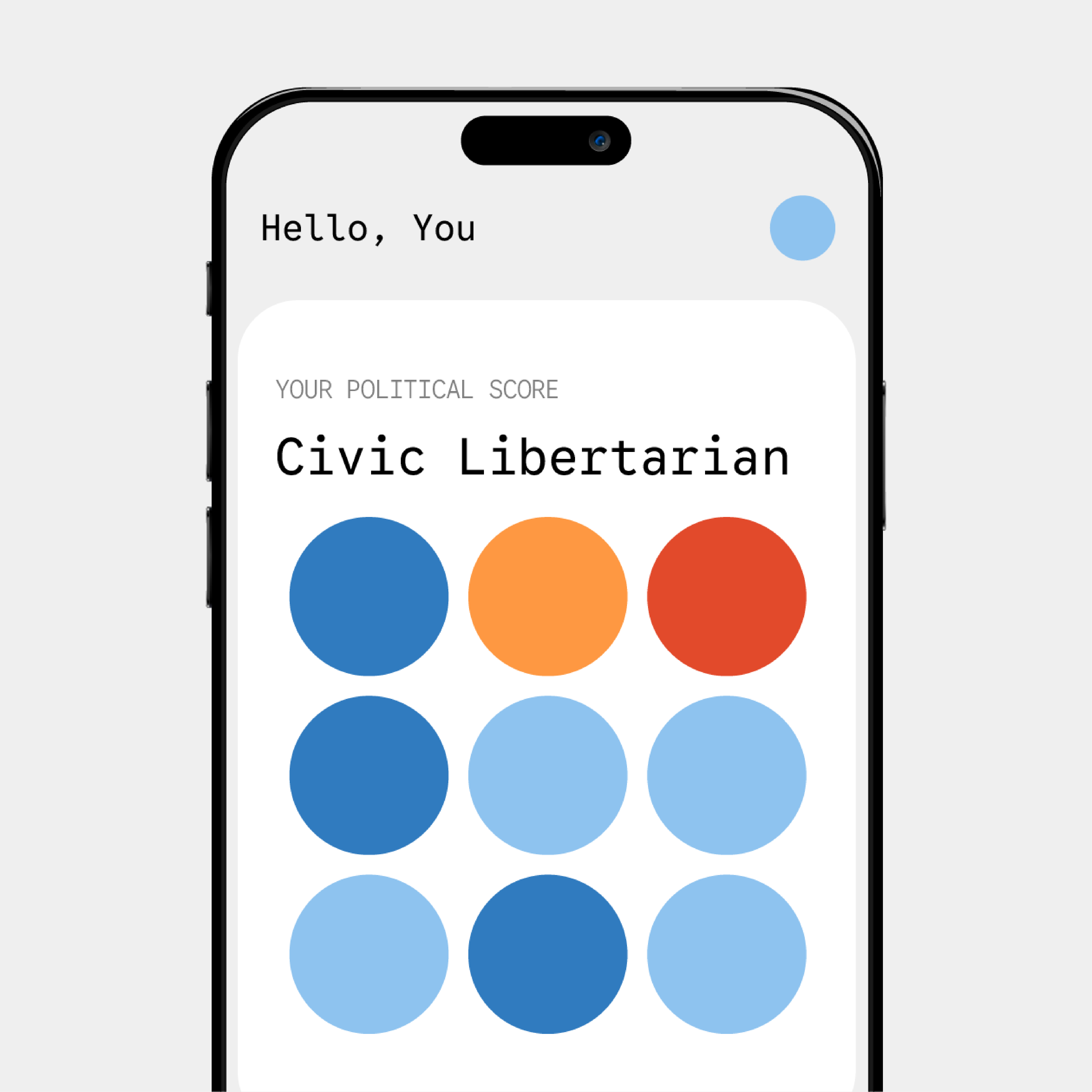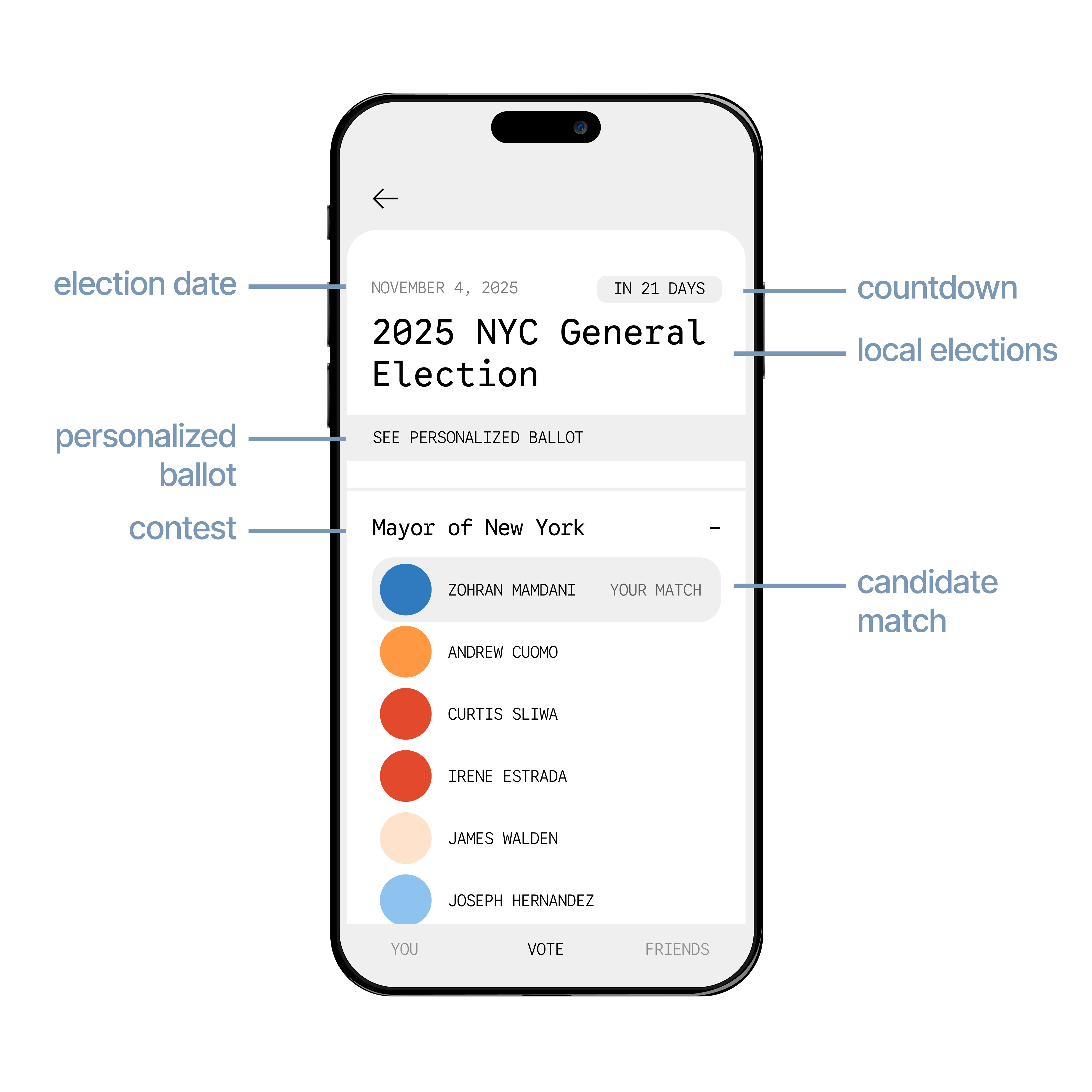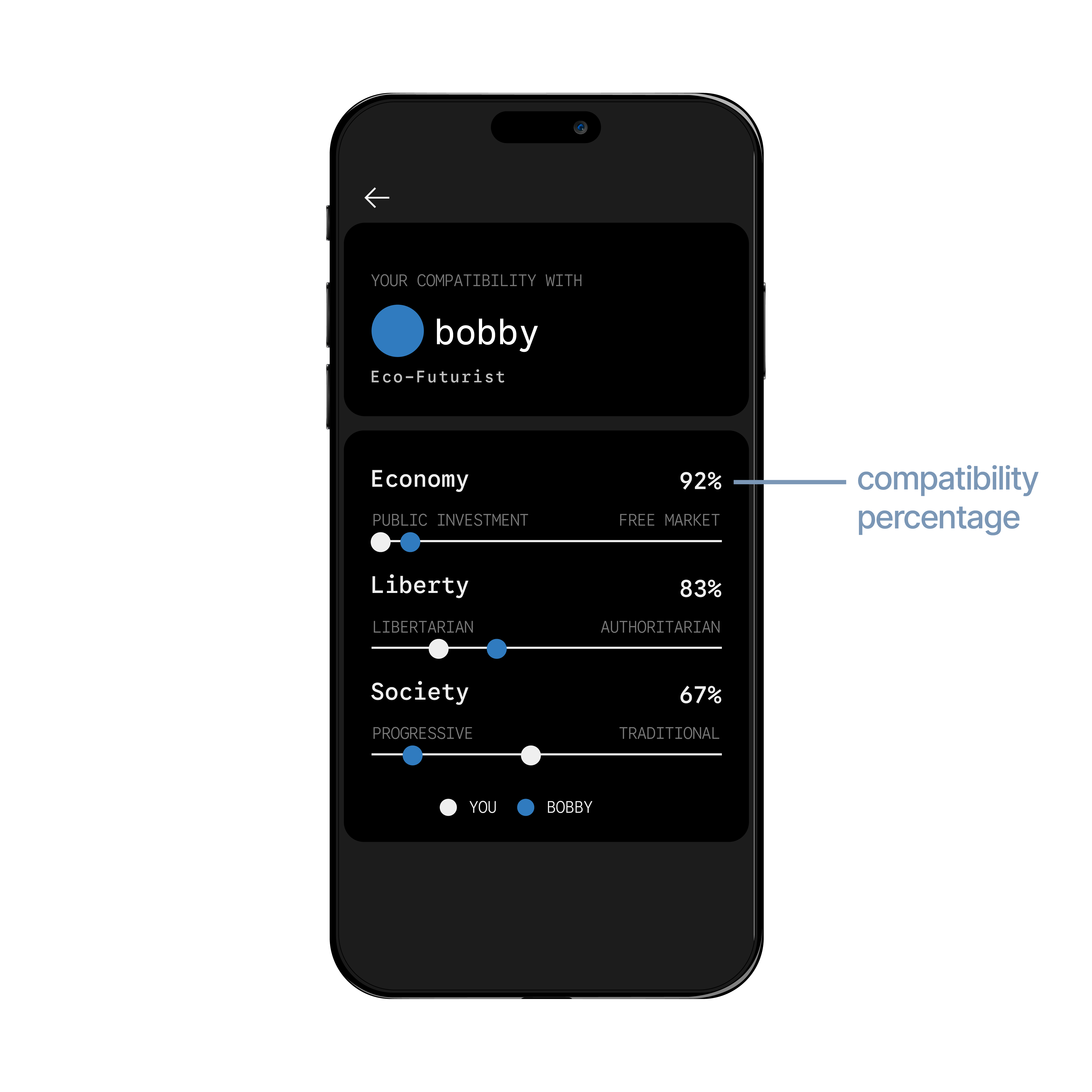the problems
1. Voting is confusing.
2. Most people don’t know who their local politicians are.
3. There’s a lack of accessible civic engagement tools.
4. Election information is fragmented and difficult to navigate.
5. The two-party system oversimplifies political identity.
6. Political ideologies are nuanced, not binary.
7. There’s no accurate or multidimensional way to score politicians.
8. Many voters rely on popularity, not shared values.
9. People are voting without context.
10. Propaganda fills the information gap.
scoring logic

3 Axis: Economy (Public Investment vs Free Market), Liberty (Libertarian vs Authoritarian), Society
(Progressive vs Traditional). Each axis goes from left to right (-2, -1, 0, 1, 2).

9 Initial Questions, Q1-Q3 = Economy, Q4-6 = Liberty, Q7-9 = Society.
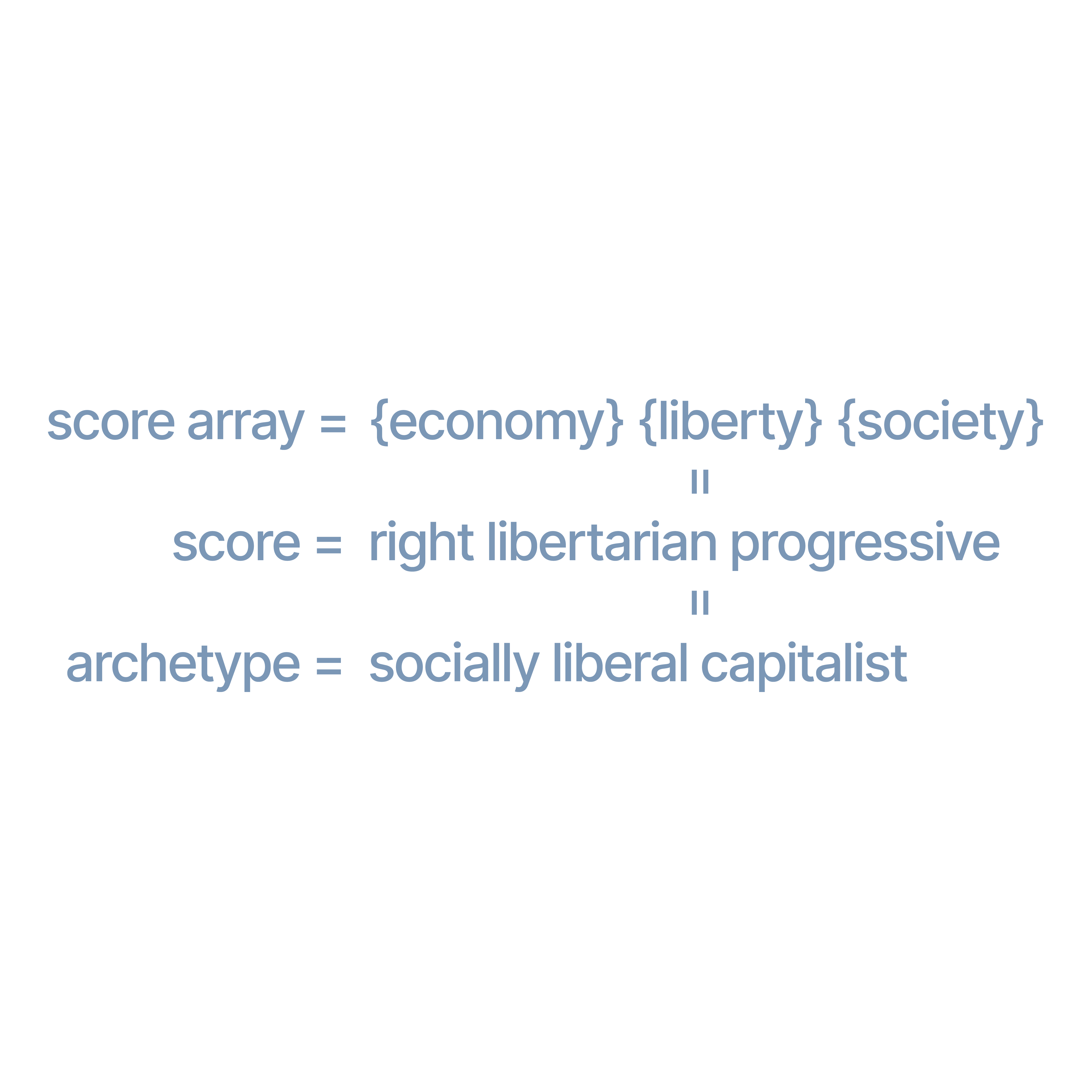
27 Archetypes ({economy score}, {liberty score}, {society score}).
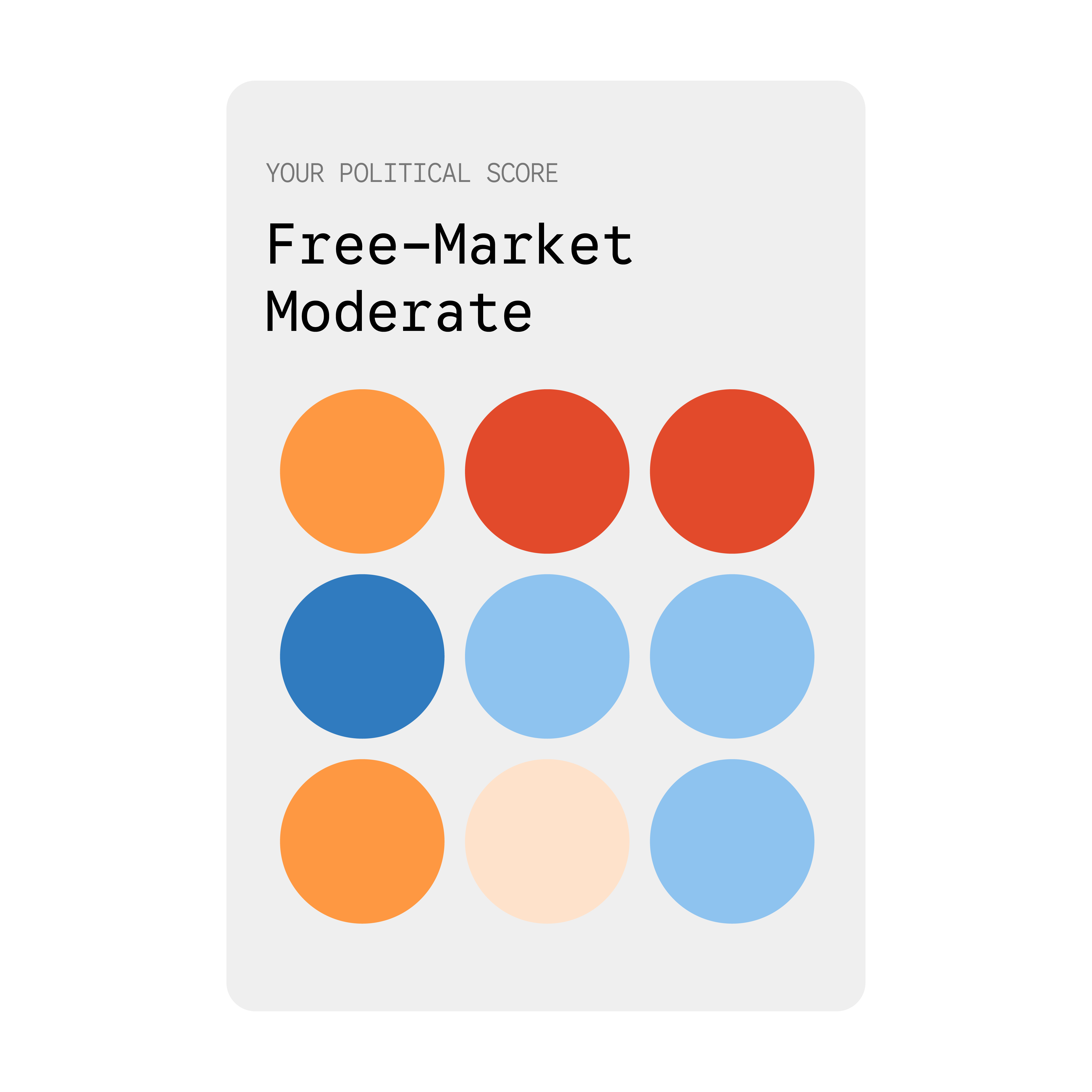
Answers from 9 questions create a color scoring grid (Dark Blue = -2, Light Blue = -1, Cream = 0, Orange =
1, Red = 2).
In order to stay up-to-date, a category is chosen by random every day (ex: Society) and then a quiz in that
category is created (3 questions). If it’s Society, the answers would affect Scores 6-8 in the user’ score
array.
